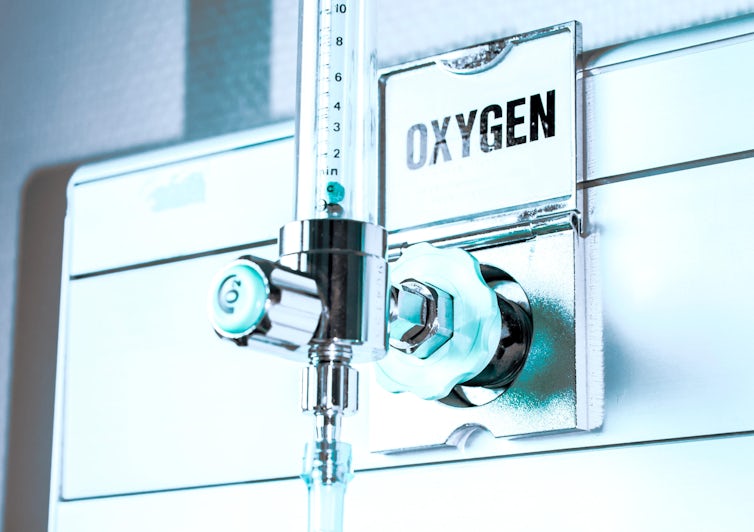
Cruising With Oxygen



Not long ago, a serious medical condition meant you were grounded. Air travel was off the table, let alone an international cruise vacation. But now, patients who require oxygen don't have to forego travel and can cruise with their medical condition. Portable oxygen concentrators (POCs) allow passengers to explore far and wide. All you need is some careful planning and consultation with your doctor, plus a check-in with your cruise line and airline to learn exactly what they require.
If you're interested in cruising with oxygen, here's what you need to know when planning your next vacation.
On This Page
The Prep
Before you book a trip, get clearance from your doctor and ask for a copy of your prescription that outlines your diagnosis and the amount of oxygen you need.
Depending on your comfort with the disability, you might consider a company that specializes in cruises with patients who use oxygen or have lung disease. Companies like Sea Puffer offer group sailings for oxygen-users, arranging details and providing support.
You should ask if your home oxygen vendor supplies POCs. If it does, insurance may cover the cost. If not, you will want to rent one. Unlike compressed or liquid oxygen, banned on planes as hazardous, the POC is a small device that separates oxygen from nitrogen and other gases in the air -- providing oxygen at greater than 90 percent concentration. Some units weigh as little as 5 pounds.
If you plan to fly, you'll also need your physician to complete a medical information form from your air carrier. Airline policies for POCs vary widely. It's key to check well in advance of departure about what documentation is required. A physician's statement, often on letterhead, is usually required, although some airlines insist that doctors complete their form.
Also, determine if your cruise line needs advance notice that you'll be traveling with an oxygen concentrator.
Give yourself a few days to get comfortable with the device, and make sure it's operating correctly. If traveling abroad, pack plugin adapters for your unit, which you may need in hotels, and even on some ships.
In Flight
The portable oxygen concentrator, first approved for use in airplanes by the Federal Aviation Administration in 2005, has revolutionized air travel for the oxygen-dependent. Until that time, traveling with oxygen was a major (and expensive) endeavor. Airlines and the TSA are familiar with the machines. Traveling with them is relatively easy. Just make sure your concentrator has a label saying it meets FAA requirements for use aboard aircraft.
One important caveat: If you will be using your POC continuously, bring enough batteries to power it for your entire flight, and then some. Many airlines require that you have enough batteries to power your unit for 150 percent of flight time, which includes every minute spent onboard plus an allowance for gate holds and other delays. You may also have to show the airline that your batteries are packed properly with terminals taped or covered.
Because oxygen concentrators and extra batteries are considered medical devices, they should not count against your carry-on baggage.
Onboard Your Cruise
The best thing about cruising with a POC is that it's similar to being at home. Just plug in your device, or rev up the battery, and you're set. To conserve battery power, use an electrical outlet whenever possible on the ship. You may want to ask the maitre d' about securing a table near one. As for shore excursions, make sure you have sufficient battery power for the duration of the tour. Also, get clarification about the degree of difficulty of excursions. One described as "easily walkable" may not be for someone using oxygen.
As with airlines, policies about medical oxygen vary widely among cruise operators. To get an idea, visit any cruise line's website, and search for "special needs" or "medical" or "disabilities," and you'll find a section on oxygen. A travel agent can also help you compare cruise line policies. Some companies require an advance doctor's letter approving the travel plan and the itinerary along with the diagnosis, the dosage of oxygen the passenger uses and the passenger's present medical condition. Others are more relaxed about it. (Note: Passengers who prefer to use oxygen tanks instead of POCs must alert the cruise line in advance to make arrangements for the delivery of equipment to the ship from a local vendor.) One thing cruise lines do agree upon: Passengers using oxygen are responsible for their own medical devices and their own supplies.
Although a lot of work, it's worth it, says Dr. Jack Nissim, a pulmonary specialist associated with University of Maryland St. Joseph Medical Center in Towson. "The people I know who travel have kind of adapted to what I think is the right way to think about oxygen: It enhances the quality of your life. It doesn't cause it to deteriorate."
For information about cruising with a different medical condition, see our articles on: